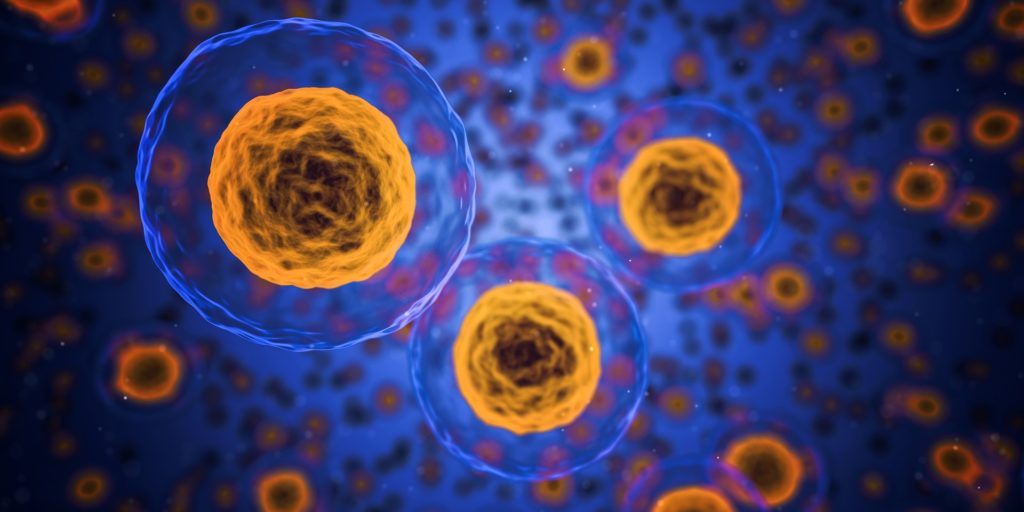
A group of University of Pittsburgh researchers has given new meaning to “knowing your ABCs.” In a new study, published in the Journal of Experimental Medicine, the team showed that a type of immune cell called age-associated B cells, or ABCs, are important drivers of lupus and that targeting these cells in a mouse model reduced disease, pointing the way to new therapies.
The immune system usually does a good job of discriminating between healthy body tissues and potential threats such as bacterial or viral infections. When exposed to a pathogen, B cells make antibodies, which help the body to recognize and eliminate the threat. The immune system then returns to less-active surveillance mode, while retaining a long-lived “memory” of prior infection.
However, in autoimmune disorders such as lupus, B cells become abnormally activated and begin attacking the patient’s organs, including the kidneys, lungs and skin.
“A hallmark of lupus is high levels of autoantibodies that bind to a patient’s own DNA or RNA,” said lead author Dr. Kevin Nickerson, research assistant professor in Pitt’s Department of Immunology.
“Because these genetic materials are never eliminated from the body, the immune system is continually reactivated, leading to inflammation that, over time, causes a great deal of damage to the patient’s body.”
According to Nickerson, existing therapies that broadly target B cells can be effective in some lupus patients, but because they also impair B cells that produce infection-fighting antibodies, these treatments can compromise immunity, suggesting a need for more narrowly focused approaches.
In the new study, Nickerson, senior author Dr. Mark Shlomchik, distinguished professor of immunology at Pitt, and their team set out to better understand the role of ABCs in lupus. Nickerson explains the study’s findings and what they could mean for the future of lupus treatments.
What are age-associated B cells?
KN: Age-associated B cells, or ABCs, are a sub-category of B cell that were first identified as being more frequent in older individuals than younger individuals. It quickly became apparent to researchers that these cells are also found in greater numbers in patients with certain autoimmune diseases, including lupus, and during certain chronic infections such as malaria and HIV. These and other findings led researchers to propose that ABCs are a type of immune memory cell that form during some types of chronic inflammatory immune responses. They might accumulate very slowly over a healthy individual’s entire lifetime, or much more rapidly in a younger patient with lupus.
What motivated this study?
KN: Previous research had shown that higher numbers of ABCs in a lupus patient’s blood often correlated with the severity of their symptoms, particularly lupus nephritis (kidney disease). ABCs were thought to be autoimmune memory B cells that develop into cells that make lupus autoantibodies. In this study, we set out to test whether ABCs were indeed a driver of lupus disease. Using a preclinical mouse model of lupus, we examined ABCs in great detail, studied their relationship to other types of B cells and genetically depleted these cells right after they are formed to see what effect they have on disease.
What were your main findings?
KN: Our most important finding was that reducing the number of ABCs by eliminating them as soon as they form slowed or reduced disease progression in the kidneys in mice, directly demonstrating that ABCs drive disease in this lupus model. We also found that ABCs are a more diverse subset of B cells than previously known, which could suggest that they have different functions or that multiple pathways are involved in their formation.
We also demonstrated that ABCs are indeed a direct precursor to the cells that make lupus autoantibodies. Although they resemble anti-pathogen memory B cells in some respects, they seem to undergo continual cycles of reactivation, proliferation and differentiation. This makes sense because the DNA and RNA to which they respond are always present, so they can’t fully enter a resting state, unlike the memory response in B cells that recognize pathogens, which are eventually eliminated.
What are the implications of these findings and what do they tell you about potential therapies for lupus?
KN: Several lupus therapeutics in the clinic today aim to reduce B cell numbers by directly killing them or by blocking the factors necessary for their survival. However, these currently available therapies are nonspecific, meaning that they affect all B cells, whether those B cells are autoreactive or directed against pathogens. While depleting all B cells prevents lupus progression and organ damage, it significantly impairs a patient’s ability to respond to infections.
If ABCs are the pathogenic population of B cells in lupus, as our study suggests, then narrowly targeted therapies that focus on eliminating these “bad” cells, while sparing “good” B cells, could be beneficial. To do this, we need a more complete understanding of ABCs and where they come from to help design the best approaches. Our study contributes to this understanding.
What are the next steps for this research?
KN: An important unresolved question is what makes ABCs so pathogenic? And how are they actually promoting disease? One part of that could be their role in making autoantibodies, but we have reason to believe that ABCs could also activate the T cell arm of the immune system in lupus. Autoreactive T cells, when activated, infiltrate organs and tissues from the bloodstream, causing injury by damaging cells and disrupting normal organ function. We want to know if ABCs are directly promoting this pathogenic process and if they are also found within the inflamed tissues at the sites of damage. In addition, we want to develop methods to deplete ABCs during ongoing disease in a preclinical model to determine if and how that could slow down or treat disease.